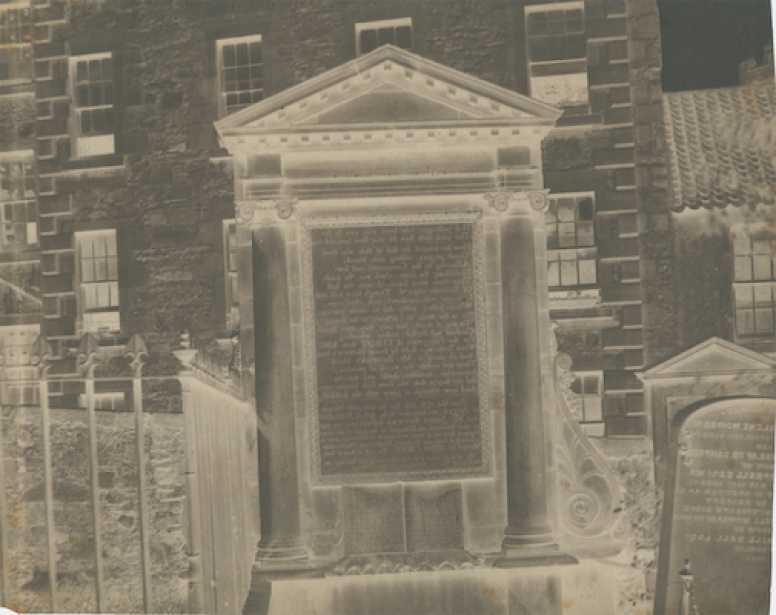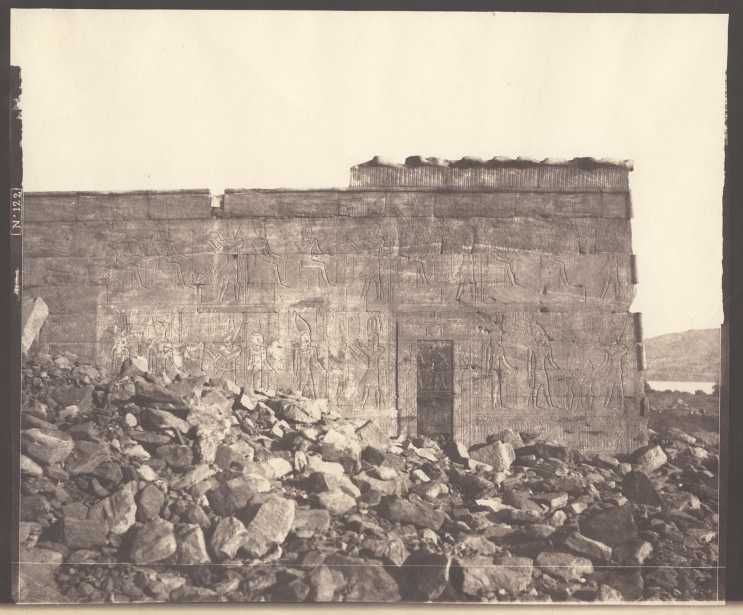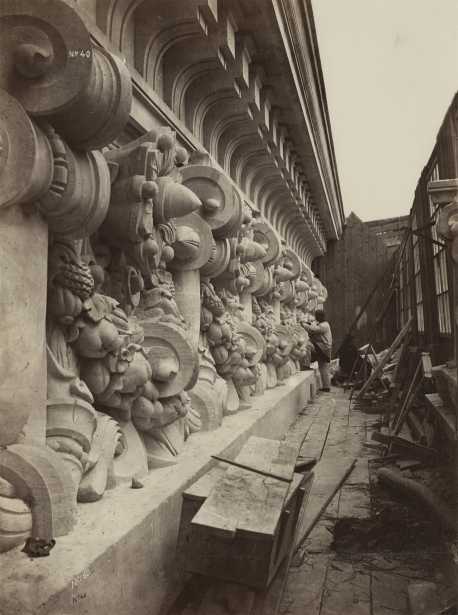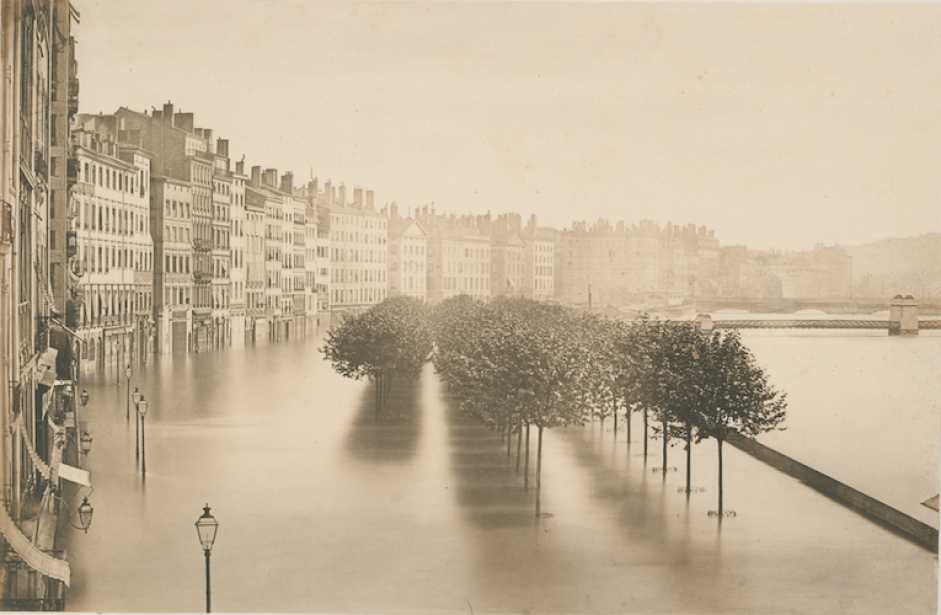The exhibition presents works of photography’s early masters, focusing on 19th century architectural views beginning in 1842 by William Henry Fox Talbot, Henri Le Secq, Gustave Le Gray, Felix Teynard, and Auguste Salzmann, among others.
Felix Teynard (1817-1892) completed an extensive photographic survey of Egypt during the course of a voyage along the Nile in 1851-52. The exhibition features three salt prints from waxed paper negatives by Teynard, including “Dendur,” (1851-1852), which is a rare, untrimmed salt print.
“Auguste Salzmann (1824-1872), a landscape painter in a family of painters, was lured into photography perhaps as a result of his first trip to the Holy Land in 1850. Once he returned to Paris, he became a student of Gustave Le Gray and quickly mastered the new art of photography. In 1854, Salzmann won a commission from the Ministry of Public Instruction to photograph monuments left by crusading knights. The artist examines an ancient ossuary in hard calcareous rock, richly sculptured in relief, cemented against a wall. An enigmatic visual fantasy of light and shade, Salzmann’s photograph subsumes any literal sense of scale or context into an abstract of tonal masses and lines,” writes the gallery.
Dr. Thomas Keith (1827-1895) is a surgeon by training and an amateur photographer by avocation. He made his first forays into the field with a camera in 1852 or 1853. In the striking graphic waxed paper negative of “Covenanters’ Monument,” Greyfriars, from 1853-1856, the architecture is reduced to a composition of strong geometric patterns with the light delineating and enhancing its shapes and textures. “Covenanters’ Monument” is one of several studies Keith made of Greyfriars Churchyard in Edinburgh.
“Louis-Antoine Froissart (1815-1860) was the official photographer for the city of Lyon, photographing scenes and events of municipal interest. In May 1856, the city of Lyon was inundated by one of the worst floods in French history. He recorded the devastation with eloquent exactitude and poetic beauty,” adds the gallery.
Permanence and Change
Architectural Views
September 12 – November 16, 2018
Hans P. Kraus, Jr.
962 Park Ave New York, NY 10028
sunpictures.com

Attributed to Dr. Thomas KEITH (Scottish, 1827-1895) Covenanters’ Monument, Greyfriars, 1853-1856, Waxed paper negative, 21.4 x 26.6 cm

Félix TEYNARD (French, 1817-1892) Dandour. Paroi Meridionale de l’Exterieur du Sanctuaire, 1851-1852, Salt print from a waxed paper negative, 26.1 x 31.4 cm

Louis-Emile DURANDELLE (French, 1839-1917) Frise et corniche de la scène, from “Le Nouvel Opéra de Paris, Sculpture Ornamentale”, 1876, Albumen print from a glass negative, 37.4 x 28.0 cm

Auguste SALZMANN (French, 1824-1872) “Jérusalem. Sarcophage Judaïque”, 1854, Blanquart-Évrard process salt print from a paper negative, 23.2 x 33.2 cm

Louis-Antoine Froissart (French, 1815-1860) Lyon Flood, 1856, Salt print from a collodion negative, 22.4 x 34.5 cm






